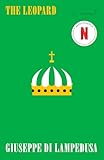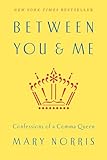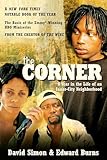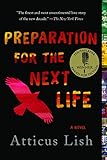Winter
As if to mark the new year, or as if preemptively depressed by the brutal lows and snows of the months to come, our thermostat suffered a nervous breakdown in the first weeks of 2015. The new normal was 63 degrees Fahrenheit. I’d wake before dawn, put on long johns, pants, fleece, and hat, and sit down at my desk, between north-facing windows, trying to start something new. The phrase “rough draft” took on a new meaning. As did the phrase “starting cold.” By noon — an interval during which I’d moved only to shower and take the kids to school and re-wrap myself in a horse blanket — my fingers and nose were phantom appendages. Looking back on this now, though, I feel a surge of warmth. Why? Because every afternoon, after a late lunch, I’d fire up the space heater in the living room and sprawl in a patch of sun and return to an imagined Italy.
I’d begun Elena Ferrante’s Neapolitan Novels with a rationing plan: one volume for each season of the year, to culminate with the publication of the fourth and final installment in September. But a week after I finished Volume 1, that plan went all to hell. More than Lila and Lenù (heroines, antagonists, entangled particles), I missed the volcanic energy they generated together. Nothing else I tried to read seemed quite as vivid. So I dipped into Volume 2 — just a few pages, I told myself. And then when I reached the end, I didn’t even pretend to wait to begin Volume 3. At various times, in the empty house, I caught myself talking back to the page. “Wake up, Lenù!” “Don’t open that door!” “Oh, no, she didn’t!” Oh, yes, she did.
The only not-fun part of binge-reading the Neapolitan series was running out of pages before the end — which, by mid-February, I had. I felt like Wile E. Coyote, having raced out over a canyon, legs still churning, but with nothing left beneath. Eventually, I found a different kind of escape: Ivan Goncharov’s Oblomov, a dreamy 19th-century Russian novel where, basically, nothing happens. Rather than distract me from my snowbound state, this novel seemed to mirror it. For the first 100 pages, Oblomov, our hero, can’t even get out of bed. He’s an archetype of inanition, a Slavic Bartleby, but with a gentleness of spirit that’s closer to The Big Lebowski. He falls in love, screws it up, gets rooked by friends and enemies…and hardly has to change his dressing gown.
 Sufficiently cooled from Ferrante fever, I moved on to Elizabeth Hardwick’s Sleepless Nights, from 1979. I’ve taught (and admired) Hardwick’s essays, but was somehow unprepared for this novel. Fans often mention it in the company of Renata Adler’s Speedboat and Joan Didion’s Play It as It Lays, with which it shares a jagged, elliptical construction and a quality of nervy restraint. But where the fragments of Adler and Didion suggest (for me, anyway), a kind of schizoid present-tense, Hardwick’s novel is as swinging and stately as a song by her beloved Billie Holiday, ringing “glittering, somber, and solitary” changes from remembered joy and pain.
Sufficiently cooled from Ferrante fever, I moved on to Elizabeth Hardwick’s Sleepless Nights, from 1979. I’ve taught (and admired) Hardwick’s essays, but was somehow unprepared for this novel. Fans often mention it in the company of Renata Adler’s Speedboat and Joan Didion’s Play It as It Lays, with which it shares a jagged, elliptical construction and a quality of nervy restraint. But where the fragments of Adler and Didion suggest (for me, anyway), a kind of schizoid present-tense, Hardwick’s novel is as swinging and stately as a song by her beloved Billie Holiday, ringing “glittering, somber, and solitary” changes from remembered joy and pain.
Spring
 As the glaciers beyond my windows melted to something more shovel-ready, I began to fantasize about a piece called “In Praise of Small Things.” At the top of the list, along with the Hardwick, would go Denis Johnson’s Train Dreams, the story of a Western railroad worker around the turn of the last century. I’m still a sucker for full, Ferrante-style immersion (favorite Westerns include The Border Trilogy, Lonesome Dove, and A Fistful of Dollars), but to deliver an entire life in a single sitting, as Johnson does, seems closer to magic than to art. Train Dreams is just about perfect, in the way only a short novel can be.
As the glaciers beyond my windows melted to something more shovel-ready, I began to fantasize about a piece called “In Praise of Small Things.” At the top of the list, along with the Hardwick, would go Denis Johnson’s Train Dreams, the story of a Western railroad worker around the turn of the last century. I’m still a sucker for full, Ferrante-style immersion (favorite Westerns include The Border Trilogy, Lonesome Dove, and A Fistful of Dollars), but to deliver an entire life in a single sitting, as Johnson does, seems closer to magic than to art. Train Dreams is just about perfect, in the way only a short novel can be.
 Then again, I also (finally) tackled The Satanic Verses this year, and caught myself thinking that perfection would have marred it. The book is loose, ample, brimful — at times bubbling over with passion. Another way of saying this is that it’s Salman Rushdie’s most generous novel. The language is often amazing. And frankly, that the fatwa now overshadows the work it meant to rub out is a compound injustice; many of the novel’s most nuanced moments, its most real and human moments, involve precisely those issues of belief and politics and belonging Rushdie was accused of caricaturing. Also: the shaving scene made me cry.
Then again, I also (finally) tackled The Satanic Verses this year, and caught myself thinking that perfection would have marred it. The book is loose, ample, brimful — at times bubbling over with passion. Another way of saying this is that it’s Salman Rushdie’s most generous novel. The language is often amazing. And frankly, that the fatwa now overshadows the work it meant to rub out is a compound injustice; many of the novel’s most nuanced moments, its most real and human moments, involve precisely those issues of belief and politics and belonging Rushdie was accused of caricaturing. Also: the shaving scene made me cry.
 Though by that point spring had my blood up. Maybe that’s why I was so ready for Giuseppe Tomasi di Lampedusa’s The Leopard. Or maybe it was the return to Italy. Either way, this turned out to be one of the most beautiful novels I’ve ever read. As with Hardwick, the mode is elegy, but here all is expansion, sumptuousness, texture: the fading way of life of an endearingly self-regarding 19th-century aristocrat, ambered in slow, rich prose (in Archibald Colquhoun’s translation): “In a corner the gold of an acacia tree introduced a sudden note of gaiety. Every sod seemed to exude a yearning for beauty soon muted by languor.” And by the time I finished, gardens were blooming and buzzing around me, too.
Though by that point spring had my blood up. Maybe that’s why I was so ready for Giuseppe Tomasi di Lampedusa’s The Leopard. Or maybe it was the return to Italy. Either way, this turned out to be one of the most beautiful novels I’ve ever read. As with Hardwick, the mode is elegy, but here all is expansion, sumptuousness, texture: the fading way of life of an endearingly self-regarding 19th-century aristocrat, ambered in slow, rich prose (in Archibald Colquhoun’s translation): “In a corner the gold of an acacia tree introduced a sudden note of gaiety. Every sod seemed to exude a yearning for beauty soon muted by languor.” And by the time I finished, gardens were blooming and buzzing around me, too.
Summer
 I woke the morning after our Fourth of July party to find that a guest had left a gift: Between You & Me: Confessions of a Comma Queen, Mary Norris’s memoir of life in the copy department of The New Yorker. We headed to the beach, on the theory that saltwater is an antidote to hangover. But I ended up spending most of the afternoon on a towel, baking, giggling, geeking out over grammar and New Yorker trivia. What kind of magazine keeps a writer this engaging in the copy department? I wondered. On the other hand: what are the odds that a grammarian this scrupulous would be such a freewheeling confidante?
I woke the morning after our Fourth of July party to find that a guest had left a gift: Between You & Me: Confessions of a Comma Queen, Mary Norris’s memoir of life in the copy department of The New Yorker. We headed to the beach, on the theory that saltwater is an antidote to hangover. But I ended up spending most of the afternoon on a towel, baking, giggling, geeking out over grammar and New Yorker trivia. What kind of magazine keeps a writer this engaging in the copy department? I wondered. On the other hand: what are the odds that a grammarian this scrupulous would be such a freewheeling confidante?

 I don’t think of myself as a memoir guy, but (appetite whetted by the Comma Queen), I ran out a few weeks later to buy a brand new copy of William Finnegan’s Barbarian Days — a book I’d been waiting to read since first encountering an excerpt a decade ago. Finnegan is a brilliant reporter, and the core material here — his life of peripatetic adventuring in the 1970s — seems, as material goes, unimprovable. Around it, he builds a narrative that is at once meticulously concrete and wonderfully, elusively metaphorical. Even if you don’t know or care about surfing, the whole thing starts to seem like some kind of parable. Which may be true of most good sports writing…
I don’t think of myself as a memoir guy, but (appetite whetted by the Comma Queen), I ran out a few weeks later to buy a brand new copy of William Finnegan’s Barbarian Days — a book I’d been waiting to read since first encountering an excerpt a decade ago. Finnegan is a brilliant reporter, and the core material here — his life of peripatetic adventuring in the 1970s — seems, as material goes, unimprovable. Around it, he builds a narrative that is at once meticulously concrete and wonderfully, elusively metaphorical. Even if you don’t know or care about surfing, the whole thing starts to seem like some kind of parable. Which may be true of most good sports writing…
And speaking of brilliant reporting: in early August, I plucked a copy of David Simon and Ed Burns’s The Corner from the giveaway pile on someone’s stoop. It’s exhaustive — almost 600 pages, and none of the broad strokes, in 2015, should come as news. Yet its account of individual struggle and systemic failure in a poor neighborhood in Baltimore is nonetheless enraging, because so little seems to have changed since the book’s publication in 1997. I found myself wanting to send a copy to every newsroom in the country. Here on the page are causes; there in the paper years later, effects.
It would take a week of vacation and newspaper-avoidance in Maine to remind me of how urgent fiction can be, too — or of the value of the different kind of news it brings. I read A Sport and a Pastime. I read Double Indemnity. I read The House of Mirth. And I fell into — utterly into — Javier Marías’s A Heart So White. This novel has some similarities with The Infatuations, which I wrote about last year; Marías works from a recipe (one part Hitchcock-y suspense, one part Sebaldian fugue, one part sly humor) that sounds, on paper, like a doomed thought experiment. Yet somehow every time I read one of his novels, I feel lit up, viscerally transfixed. And A Heart So White is, I think, a masterpiece.
Fall
 This October, I published a novel. And I came to suspect that prepub jitters had been shaping both my reading and my writing all year, from those cold dark starts in January to my lean toward nonfiction in the summer. Anyway, some admixture of vacation and publication (the phrase “release date” takes on a whole new meaning) seemed to cleanse the windows of perception, because I spent most of the fall catching up on — and enjoying — recent books I’d missed. Preparation for the Next Life, for example, was love at fist page; if you’d told me Atticus Lish was another of Don DeLillo’s pseudonyms, like Cleo Birdwell, I wouldn’t have batted an eyelash. Yet an eccentric and (one feels) highly personal sense of the particular and the universal colors the prose, and Lish doesn’t let sentimentalism scare him away from sentiment. His milieu of hardscrabble immigrants and natives jostling in Flushing, Queens, feels both up-to-the-minute and likely to endure. Someone should Secret-Santa a copy to Donald Trump.
This October, I published a novel. And I came to suspect that prepub jitters had been shaping both my reading and my writing all year, from those cold dark starts in January to my lean toward nonfiction in the summer. Anyway, some admixture of vacation and publication (the phrase “release date” takes on a whole new meaning) seemed to cleanse the windows of perception, because I spent most of the fall catching up on — and enjoying — recent books I’d missed. Preparation for the Next Life, for example, was love at fist page; if you’d told me Atticus Lish was another of Don DeLillo’s pseudonyms, like Cleo Birdwell, I wouldn’t have batted an eyelash. Yet an eccentric and (one feels) highly personal sense of the particular and the universal colors the prose, and Lish doesn’t let sentimentalism scare him away from sentiment. His milieu of hardscrabble immigrants and natives jostling in Flushing, Queens, feels both up-to-the-minute and likely to endure. Someone should Secret-Santa a copy to Donald Trump.
 Another contemporary novel I loved this fall was actually more of a novella — another small, good thing. Called Grief Is the Thing with Feathers, it’s the first published work of fiction by a young Englishman named Max Porter. It follows a father of two through the year after the death of his wife. The chapters are compressed, poetic vignettes that evoke the chimera of grief through suggestion and indirection. And then, more evocative still: the arrival of a giant, metempsychotic raven straight out of Ted Hughes’s Crow. You quickly forget that the book is weird as hell, because it is also beautiful as hell, moving as hell, and funny as hell.
Another contemporary novel I loved this fall was actually more of a novella — another small, good thing. Called Grief Is the Thing with Feathers, it’s the first published work of fiction by a young Englishman named Max Porter. It follows a father of two through the year after the death of his wife. The chapters are compressed, poetic vignettes that evoke the chimera of grief through suggestion and indirection. And then, more evocative still: the arrival of a giant, metempsychotic raven straight out of Ted Hughes’s Crow. You quickly forget that the book is weird as hell, because it is also beautiful as hell, moving as hell, and funny as hell.
 In late October, I got to spend a week in the U.K., and decided to pack London Fields. A boring choice, I know, but I’d been shuttling from here to there for a few weeks, and needed to be pinned down in some specific, preferably Technicolor, place. London Fields didn’t let me down. The metafictional schema shouldn’t work, but does. And more importantly, a quarter century after its publication (and 15 years on from the pre-millennial tension it depicts), the prose still bristles, jostles, offends freely, shoots off sparks. The picture of the world on offer is bleak, yes. Yet in surprise, in pleasure, in truthfulness, almost every sentence surpasses the last. This book is now my favorite Martin Amis. I wouldn’t trade it for love or Money.
In late October, I got to spend a week in the U.K., and decided to pack London Fields. A boring choice, I know, but I’d been shuttling from here to there for a few weeks, and needed to be pinned down in some specific, preferably Technicolor, place. London Fields didn’t let me down. The metafictional schema shouldn’t work, but does. And more importantly, a quarter century after its publication (and 15 years on from the pre-millennial tension it depicts), the prose still bristles, jostles, offends freely, shoots off sparks. The picture of the world on offer is bleak, yes. Yet in surprise, in pleasure, in truthfulness, almost every sentence surpasses the last. This book is now my favorite Martin Amis. I wouldn’t trade it for love or Money.
 As synchronicity goes, M Train on a plane may not quite match London Fields in London, but Patti Smith’s new book remains one of the best reading experiences I had this year. Like Grief Is the Thing with Feathers, it is elliptical and fragmentary, weird and beautiful, and, at its core, a reckoning with loss. Much has been made of the book’s seeming spontaneity, its diaristic drift. But as the echoes among its discrete episodes pile up, it starts to resonate like a poem. At one point, Smith writes about W.G. Sebald, and there are affinities with The Emigrants in the way M Train circles around a tragedy, or constellation of tragedies, pointing rather than naming. It is formally a riskier book than the comparatively straight-ahead Just Kids, but a worthy companion piece. And that Patti Smith is still taking on these big artistic dares in 2015 should inspire anyone who longs to make art. In this way, and because it is partly a book about reading other books — how a life is made of volumes— it seems like a fitting way to turn the page on one year in reading, and to welcome in another.
As synchronicity goes, M Train on a plane may not quite match London Fields in London, but Patti Smith’s new book remains one of the best reading experiences I had this year. Like Grief Is the Thing with Feathers, it is elliptical and fragmentary, weird and beautiful, and, at its core, a reckoning with loss. Much has been made of the book’s seeming spontaneity, its diaristic drift. But as the echoes among its discrete episodes pile up, it starts to resonate like a poem. At one point, Smith writes about W.G. Sebald, and there are affinities with The Emigrants in the way M Train circles around a tragedy, or constellation of tragedies, pointing rather than naming. It is formally a riskier book than the comparatively straight-ahead Just Kids, but a worthy companion piece. And that Patti Smith is still taking on these big artistic dares in 2015 should inspire anyone who longs to make art. In this way, and because it is partly a book about reading other books — how a life is made of volumes— it seems like a fitting way to turn the page on one year in reading, and to welcome in another.
More from A Year in Reading 2015
Don’t miss: A Year in Reading 2014, 2013, 2012, 2011, 2010, 2009, 2008, 2007, 2006, 2005
The good stuff: The Millions’ Notable articles
The motherlode: The Millions’ Books and Reviews
Like what you see? Learn about 5 insanely easy ways to Support The Millions, and follow The Millions on Twitter, Facebook, Tumblr.










